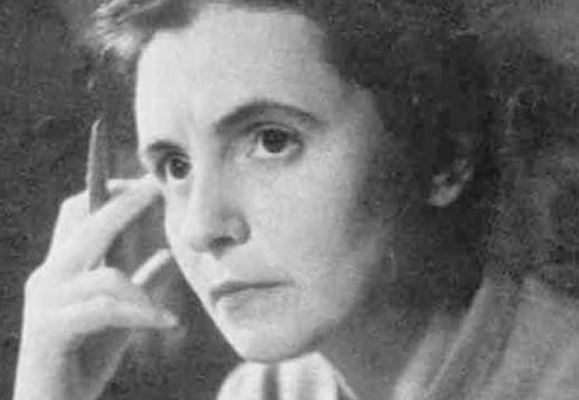Contents
Olga Ladyzhenskaya – The Rebellious Mathematician
Olga Ladyzhenskaya is one of the most respected and influential mathematicians, ever. She gained her popularity through hard work and received the Lomonosov Gold Medal in 2002, at the age of 79. Olga Ladyzhenskaya also became the Member of the Russian Academy of Sciences in 1990. She is most commonly known for her work on partial differential equations, fluid dynamics, and the finite-difference method for the Navier-Stokes equation.
Biography – Olga Ladyzhenskaya
Olga Ladyzhenskaya was born in Kologriv, (modern-day) Russia. She was born on the 7th of March, 1922. Olga Ladyzhenskaya’s family was quite talented in the field of mathematics. Her father being a mathematics’ teacher is said to be her inspiration growing up and her increased love for mathematics. Growing up in communist-USSR, she faced a lot of political challenges along with personal obstacles which could have easily deprived us of her achievements today. She overcame those difficult times and remained determined to her goal.
Early life and Education – Olga Ladyzhenskaya
Her father was executed in 1937 by the Stalinist authorities for being “an enemy of the state”. This was a massive blow for Olga Ladyzheskaya aged only fifteen. It proved to be an enormous problem for her later on, as well. She was denied admission into Leningrad State University because of her father’s ties. This came after she secured excellent grades in secondary school.
Due to the allegations on her father, Olga Ladyzhenskaya spent a few years teaching in an orphanage and then in a secondary school before finally being allowed to enroll in Moscow State University in 1943. It was all the motivation that she needed, as she went to get her doctorate from the Leningrad State University that had earlier denied her admission.
Difficulties in Life – Olga Ladyzhenskaya
Ladyzheskaya’s life was filled with obstacles. Having completed her thesis in 1951, she had to wait two years to publish it in 1953, and that was after Joseph Stalin died. It shows the number of political disturbances that hindered her mathematical genius and raises the question of what else she could have done if not for all these restrictions. These restrictions limited her travel and could not go past Eastern Europe. She did attend the International Congress of Mathematics in Edinburgh, but could not visit that again until 1988. None of the other famous scientists were allowed to visit the Soviet Union, so she never got the chance to discuss and learn and give her insight on several mathematical issues for a lot of years. The disintegration of the Soviet Union came as a breath of fresh air for scientists in 1989 and allowed them to take their knowledge beyond the borders of the Soviet Union.
Contributions to Mathematics
Her contributions to the field of mathematics and many other fields are remarkable. Perhaps, her more important contributions are to the area of fluid dynamics. Olga Ladyzhenskaya’s books count six, and she also published more than 250 research articles. Her research has gone on to impact oceanography, cardiovascular science, aerodynamics, and even weather forecasting.
Olga Ladyzhenskaya’s formula was the first proof obtained of convergence of a finite difference method for the Navier-Stokes equations. It was a huge breakthrough and allowed scientists to accurately predict the weather, along with many other things. She defended her thesis in 1953 for her work on partial differential equations. It is also considered to be a huge achievement. There is a common belief among scientists who recognize her achievements better than the ordinary layman, that had she not been restricted to the boundaries of the Soviet Union, she would have been more celebrated and respected worldwide. Her notable works also include the analysis of the regularity of parabolic equations. Along with that, she also worked with the famous Soviet mathematician, Ivan Petrovsky, and wrote a student thesis, which was nominated for Fields Medal.
Death and Legacy
Later on, towards the end, she suffered from some eye-related problems. However, just as political and personal obstacles could not keep her from her love of mathematics, she found a way to deal with this, as well. She used special pencils to continue to contribute to the field of mathematics. Olga Ladyzhenskaya died in January 2004 in St. Petersburg at the age of 81. She will always be remembered for her remarkable work in multiple fields. Olga Ladyzhenskaya’s death cause was not disclosed, but it is widely believed that she died peacefully in her sleep just two days before her trip to the USA. Outside of mathematics, we learn that Olga Ladyzhenskaya was an animal lover. She was also very much interested in art, literature, and music. This love for storytelling and art could have been due to her friendship with the famous Soviet poet Anna Akhmatova. She was also friends with the counting writer, Aleksander Solzhenitsyn.
What can we learn from Olga Ladyzhenskaya?
Olga Ladyzhenskaya was also a philanthropist and led a life which was termed as a rebel. She took on the Soviet state alone when needed and managed to help so many people who were oppressed by the regime. We can learn so much from the life story of one of the bravest scientists of the 20th Century. She is not only an icon for the women around the world but to every single person who inspirations and goals. We can learn that no matter what the obstacle if you are true to your cause, you can achieve everything. It takes a lot of determination, but if you put your mind to it, nothing is impossible. We learn that it is always important to side with the good, and we should not be afraid to do the right thing.

